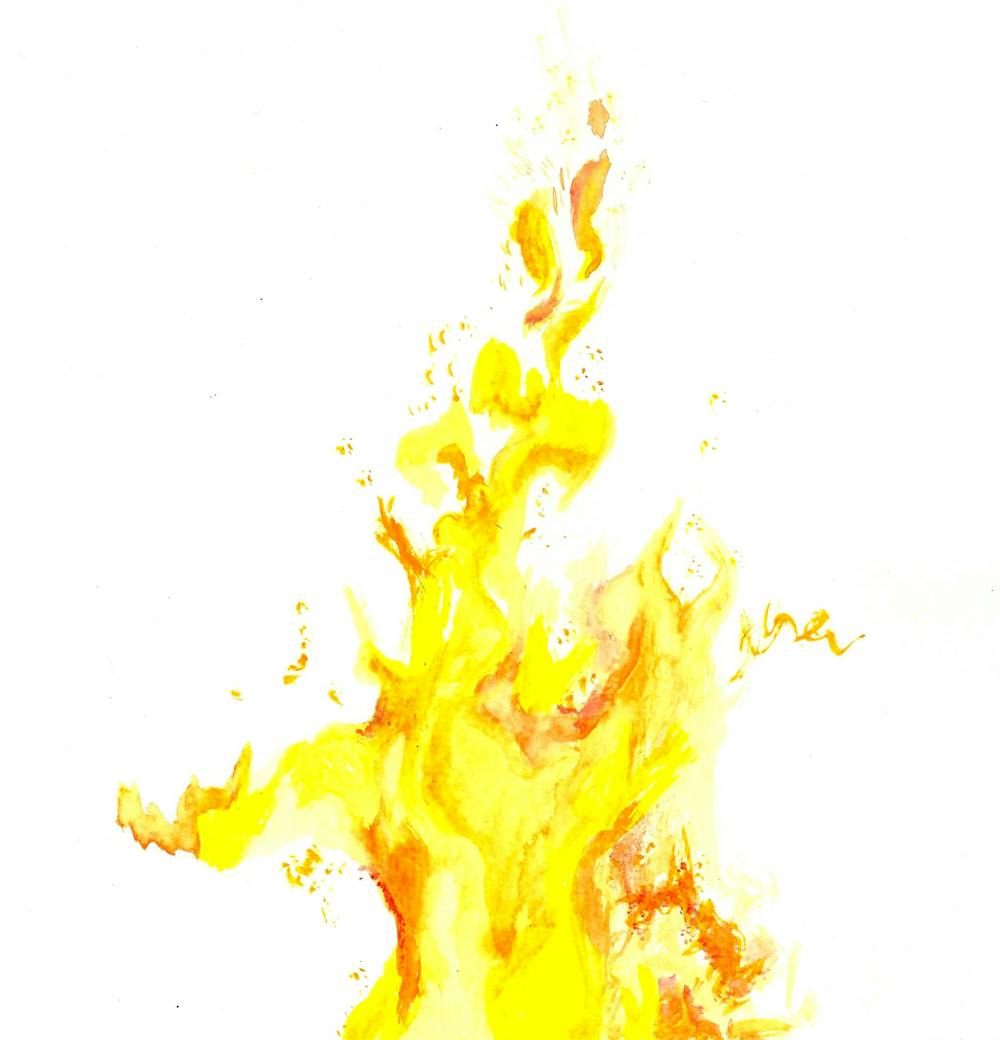Under the dimly lit glass cases of the John Carter Brown Library, yellowed manuscripts reveal passages and images printed hundreds of years ago — all of which share one thing in common: fire.
This Friday marks the official opening of a new exhibition at the JCB: “The Americas on Fire.” The third of a series on the four elements, the exhibit features approximately 50 documents, including manuscripts, maps and other materials gathered from the library’s collection. Spanning the 16th through 19th centuries, the pieces work together to demonstrate the role of fire in “literally fueling” many aspects of pre-colonial and colonial life, said Associate Professor of History and Director of the John Carter Brown Library Neil Safier.
The exhibit was guest-curated by Jake Frederick, associate professor of history at Lawrence University, and Júnia Furtado, professor of history at Federal University of Minas Gerais, Brazil, at Safier’s invitation. Both curators were well-suited for the task: Furtado had been discussing the idea of an element-themed exhibition series with Safier for a long time and Frederick was a fellow at the JCB in 2015, when he worked on a project about fire in the Americas. Following exhibits on Earth in 2015 and Air in 2016, the two began the curation process for Fire this January.
Throughout this process, the researchers shared the responsibility of selecting the documents to be displayed, often working remotely from the JCB’s digital collection. Several factors influenced their consideration of individual pieces, including a desire to “display the depth and breadth of the JCB’s collection,” Frederick said, as well as to create a cohesive narrative for the exhibit as a whole. “We decided what history we would like to tell,” Furtado said. Eventually, they divided their images into six separate categories: “the fires of daily life,” “commodities and consumption,” “fueling colonization,” “fire as foe,” “fires of resistance” and “contact, confrontation and condemnation”
One of the earliest documents in the collection hails from mid-16th-century Brazil. Drawn from the experience of a German soldier, Hans Staden, who was captured by the indigenous Tupinambá tribe, the image depicts a scene of cannibalism, complete with human limbs roasting over a fire. Staden’s stereotypical portrayal of the Tupinambá was widely circulated after his return to Europe, influencing subsequent colonizers’ representations of native peoples. “For a long time … (this image) was reproduced everywhere,” Furtado said. “It became a stamp (to represent) the Native Americans. It became iconic.”
Another document, a Spanish manual intended for religious instruction, incorporates elements of indigenous artwork from central Mexico. The manuscript condemns idolatrous speech through a series of pictographs — reminiscent of native Mexican imagery — depicting people both speaking and being punished for spreading blasphemies. “Spaniards were trying to use this native writing genre with their own Spanish twist on it,” Frederick said.
Collectively, the pieces showcase the many ways in which fire has been used throughout history to both help and hinder human civilization. “Fire is absolutely pervasive in the American experience and in the human experience,” Frederick said. “Looking at fire really can allow you access to any subject that you want to access … It is this very human thing, but it is also this powerful elemental force that can exert force over humans when the mood strikes it.”
Moreover, “The Americas on Fire” demonstrates that, even when domesticated, fire can be both generative and destructive. “Europeans used fire as a way to explore American nature, … to make American nature profitable,” Furtado said. Nonetheless, she added, “(fire can be) a way to resist colonization, … to break the European power in order to achieve independence.”
One of the JCB’s current goals is to “draw in undergraduate students who maybe don’t have the chance to do research at the JCB, but might discover primary source material that they could use for a class by visiting our exhibitions,” said Tara Kingsley, coordinator of academic programming and public outreach at the JCB. This entails the expansion of the library’s audience to students outside the traditional realm of the humanities.
As such, “The Americas on Fire” serves as a “jumping off point to think about collaborative and interdisciplinary scholarship,” Safier said. The exhibition coincides with a two-week event sponsored by the Institute at Brown for Environment and Society, titled “What Fire Does.” Through this event, the JCB and IBES collaborate to foster dialogue about both the scientific and historical connotations of fire and tie them together in the context of modern day issues, such as global warming, Safier said. He added that he “really (hopes) that … people are inspired to see our collection as useful for understanding the broader history, and the present day controversies, around climate change.”





